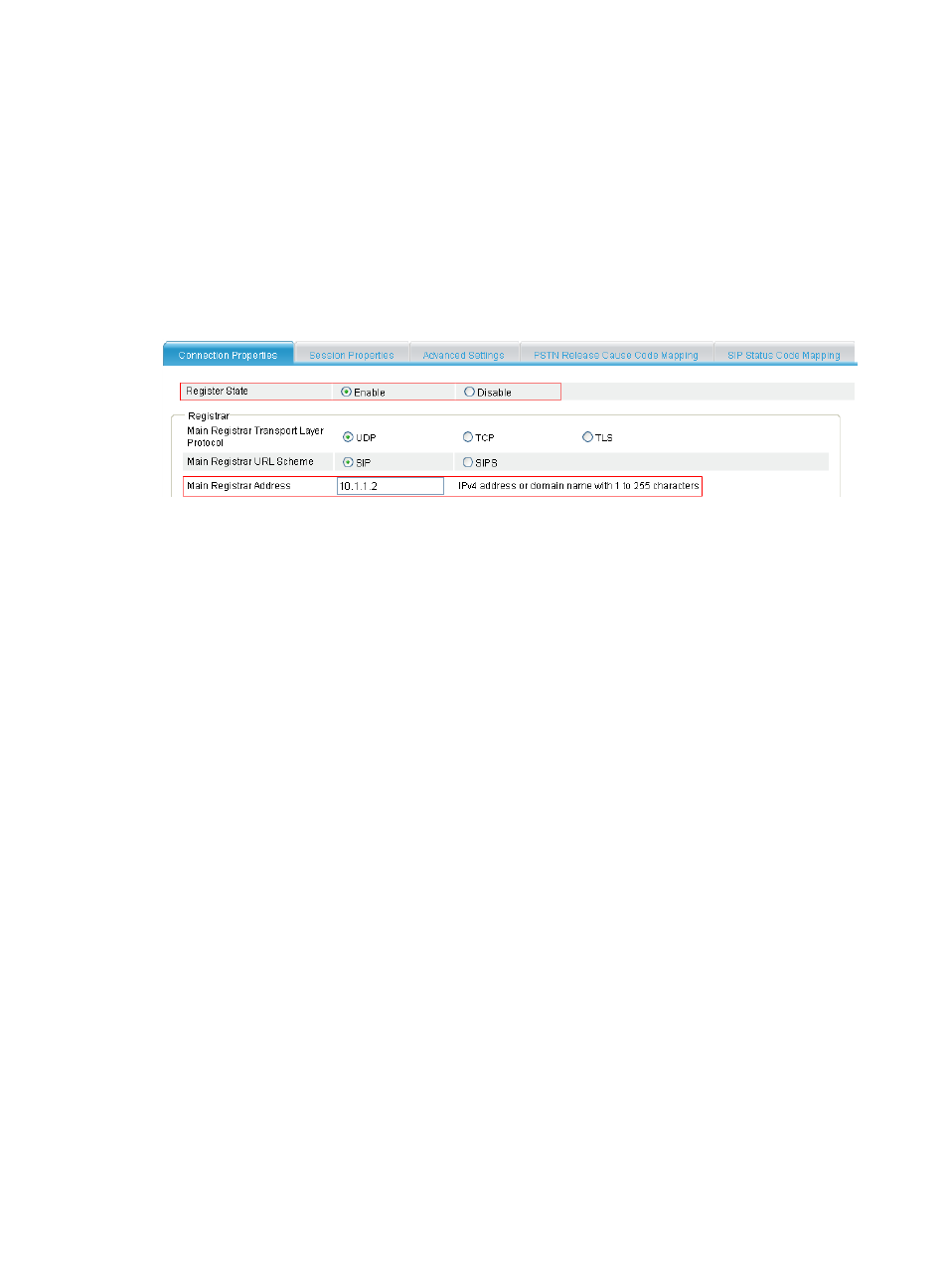Verifying the configuration, Network requirements – H3C Technologies H3C MSR 50 User Manual
Page 718

333
8.
Enter 2000 for Destination Number.
9.
Select SIP for Call Route Type.
10.
Select Proxy Server for SIP Routing.
11.
Click Apply.
# Configure the IPv4 address of the registrar as 10.1.1.2 and enable the registrar.
12.
Select Voice Management > Call Connection > SIP Connection from the navigation tree and click
the Connection Properties tab.
Figure 727 Configuring connection properties
13.
Select Enable for Register State.
14.
Enter 10.1.1.2 for Main Registrar Address.
15.
Click Apply.
Verifying the configuration
1.
On the SIP trunk device, display SIP trunk account information.
Select Voice Management > States and Statistics > SIP Trunk Account States from the navigation
tree. You can see that the private network account 2000 has registered with the server at
10.1.1.2.
2.
All calls between the private network and public network are made through the SIP trunk device.
On the SIP trunk device, you can see in Voice Management > States and Statistics > Call Statistics
that all calls between the private network and public network are made through the SIP trunk
device.
3.
On the SIP server of the carrier, you can view only the interface address of the SIP trunk device,
which means that the SIP trunk device can filter the information of the enterprise private network
users.
Configuring a SIP server group with multiple member servers
Network requirements
The enterprise private network has a SIP trunk device. Router A is a private network device, and Router
B is a public network device. Configure a SIP server group with multiple member servers so that all calls
between the private network and public network are made through the SIP trunk device. The carrier is
required to provide multiple servers to ensure call reliability.
